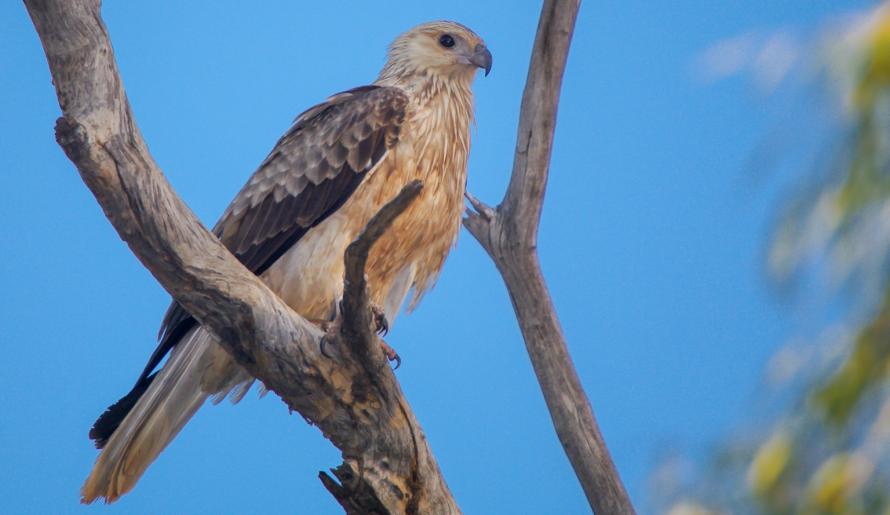
Whistling Kite
Haliastur sphenurus
| Details | |
|---|---|
| Type | Bird |
| Group | |
| Biology | Breeding season: July to January in the south, and March to October in the north. Clutch size is one to three. They appear to mate for life. The bulky nest platform is built of sticks in a tall tree and may be reused, growing larger over time. Both sexes build the nest and incubate eggs (females do most of the work). Pairs actively defend the area around the nest. |
| Distinctive Markings | The underwings have a characteristic pale 'M' shape when open. |
| Taxonomy | |
|---|---|
| Phylum | Chordata |
| Class | Aves |
| Order | Falconiformes |
| Family | Accipitridae |
| Genus | Haliastur |
| Species | sphenurus |
Whistling Kites tend to be found singly or in pairs, but sometimes gather in larger groups, particularly during nomadic movements, at roost sites and at sources of plentiful food.
| Interesting Facts | |
|---|---|
| Diet | Carnivore. Feeds on small mammals, birds, fish, insects and carrion (dead animals). |
| Habitat | Found in woodlands, open country and wetlands. |
| Native Status | Native to Australia |